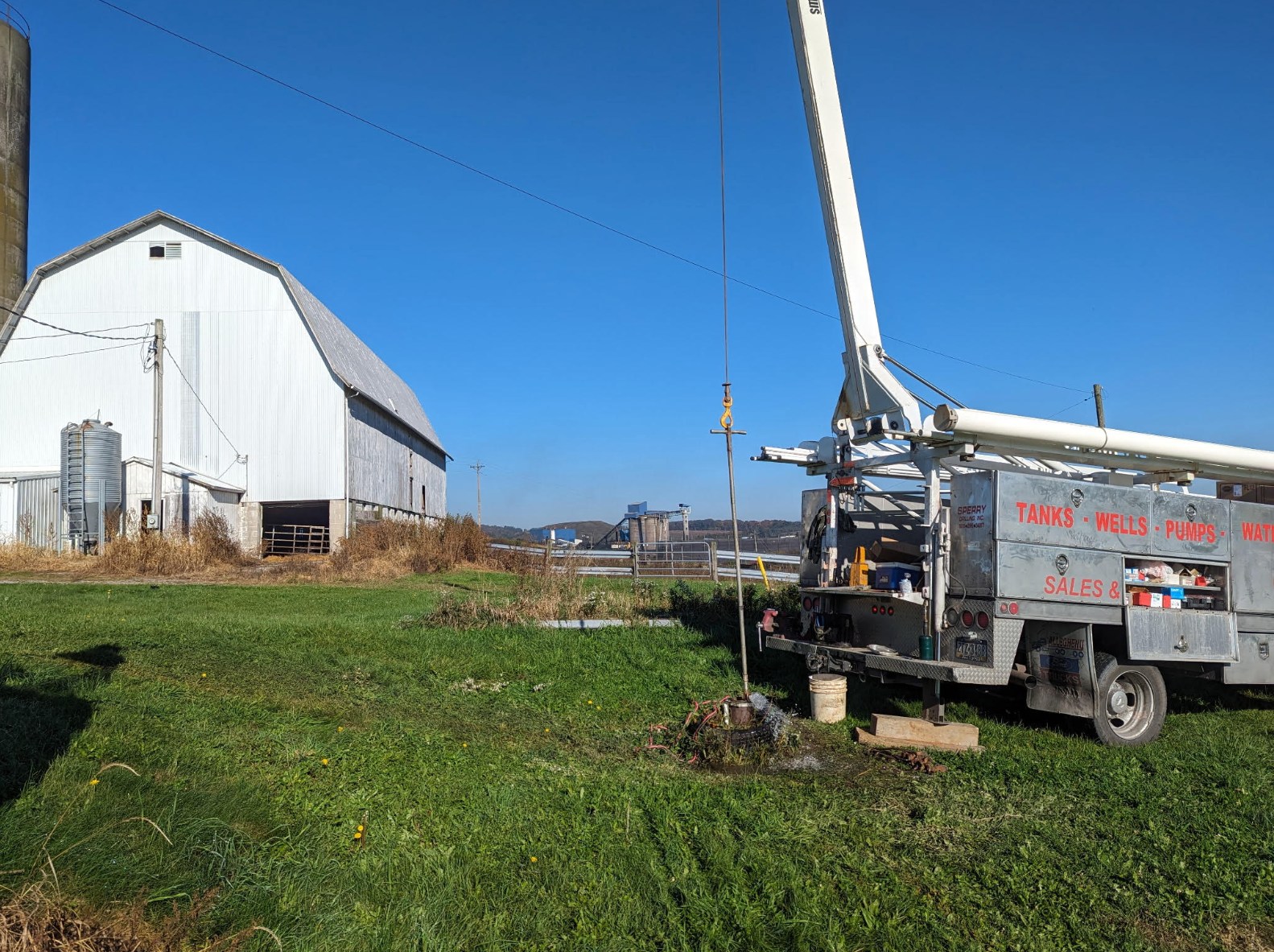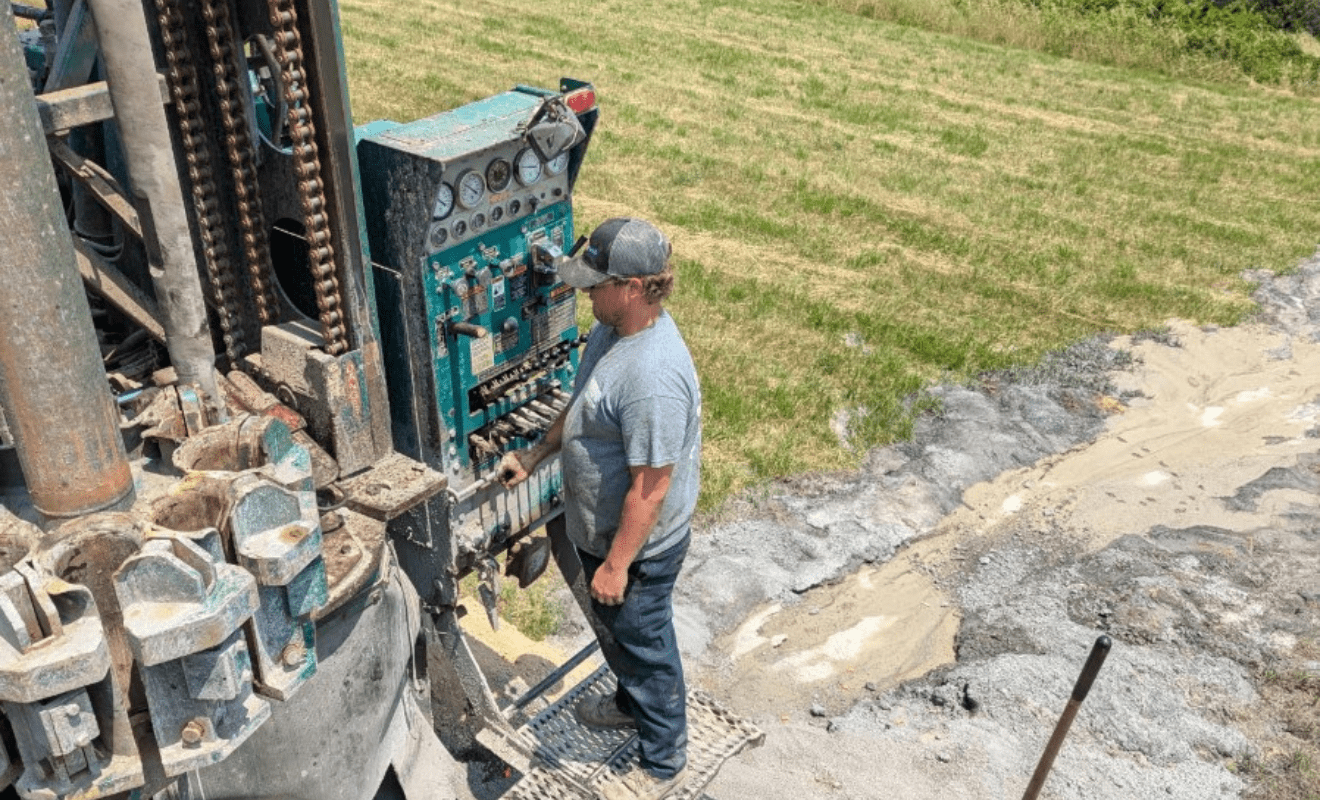Choosing the correct size for your well pump is crucial to ensuring a reliable water supply, consistent pressure and long-term equipment performance. Whether you’re installing a new pump or replacing an existing one, it’s essential to evaluate flow rate, well depth and your household water demand. Undersizing can lead to poor water pressure, while oversizing may cause premature wear and wasted energy.
This guide from the pros at Sperry Drilling Inc. will walk you through the key considerations for properly sizing a well pump for your home or property.

Understanding Flow Rates: How Much Water Do You Need?
A well pump must supply enough water to meet your home’s peak demand, typically measured in gallons per minute (GPM). Flow rate depends on the number of water-using fixtures and appliances in your home.
Common Flow Rate Estimates:
- Kitchen faucet: 2–3 GPM
- Shower: 2–5 GPM
- Toilet: 1.5–3 GPM
- Washing machine: 4–5 GPM
- Dishwasher: 2–3 GPM
- Outdoor hose: 3–5 GPM
General Rule: Estimate 1 GPM per fixture. For a typical 3-4 bedroom household, a 10-12 GPM pump is usually sufficient.
For an accurate assessment, a professional technician can conduct a water usage audit to determine the actual demand based on your property’s setup.

Factoring in Well Depth and Water Table
The depth of your well has a significant impact on pump selection. The deeper the water level, the more powerful the pump must be to lift water to the surface. This is known as total dynamic head (TDH), which accounts for vertical lift, pipe friction, and pressure requirements.
Types of Pumps by Depth:
- Shallow well pumps (up to 25 feet deep): Jet pumps are common and mounted above ground.
- Deep well pumps (25–400+ feet): Submersible pumps are installed inside the well and are more efficient for greater depths.
Tip: Always measure the “static water level” (distance from ground to water surface) and “drawdown level” (lowest water level during pumping) to accurately determine head requirements.
Matching Pump Capacity to Your Household Needs
Once you know your flow rate and well depth, it’s time to select a pump with the right specifications:
Consider the Following:
- Pump Horsepower (HP): More HP = higher pressure and flow for deep wells or high demand. Residential systems usually range from 1/2 to 2 HP.
- Pressure Switch Settings: Most homes use 30/50 PSI or 40/60 PSI switches. Ensure your pump is compatible.
- Tank Size Compatibility: The pressure tank must be properly sized to avoid rapid cycling of the pump, which can reduce its lifespan.
- Pump Curve Matching: Each pump has a performance curve indicating how it handles various flow and head levels. Choose one that operates efficiently in your required range.

Common Mistakes to Avoid
- Guessing Your Needs: Avoid estimating—get professional input on your flow requirements and well specs.
- Oversizing the Pump: Bigger isn’t always better. Oversized pumps can cause short cycling, which damages the motor and reduces system life.
- Ignoring the Tank Size: An undersized tank causes the pump to turn on/off more frequently, leading to wear and higher energy costs.
- Not Accounting for Future Usage: If you’re planning to add irrigation, livestock or expand your home, consider sizing your pump with that future demand in mind.

Take Out the Guesswork With Sperry Drilling Inc.
Choosing the right well pump isn’t guesswork—it requires knowledge, experience, and accurate measurements. At Sperry Drilling Inc., we take the guesswork out of pump sizing by evaluating your home’s demand, your well’s specs, and your long-term needs.
With over 50 years of experience serving Pennsylvania, Maryland, and West Virginia, we offer professional pump installation and repair services using top brands like Franklin and Goulds.
Call (814) 267-3487 or contact us here to schedule a FREE consultation today.




